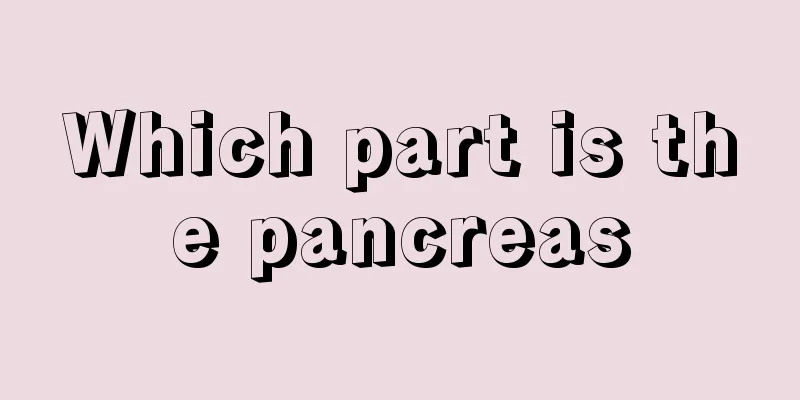Which part is the pancreas

|
The pancreas is an important part of the body and is located on the posterior wall of the abdomen. We can feel it by pressing the posterior wall of the abdomen with our hands. It is mainly composed of pancreatic islet cells and is the main tissue that secretes insulin. We should protect the pancreas well. Insulin, secreted by the pancreas, is very important in regulating the sugar level in the blood, as low insulin levels can cause symptoms of hyperglycemia. The pancreas is a long and narrow gland located horizontally on the plane of the 1st and 2nd lumbar vertebrae of the posterior abdominal wall. It is soft in texture and gray-red in color. The pancreas can be divided into four parts: the head, neck, body, and tail. The pancreatic duct is located in the pancreatic parenchyma, and its course is consistent with the long axis of the pancreas. It runs from the tail of the pancreas through the pancreatic body to the head of the pancreas, receiving many interlobular ducts along the way. Finally, it merges with the common bile duct in the wall of the descending duodenum to form the hepatopancreatic ampulla, opening at the major duodenal papilla. Sometimes a small tube can be seen at the upper part of the pancreatic head, running above the pancreatic duct, called the accessory pancreatic duct, which opens into the duodenal papilla. The pancreas is divided into two parts: the exocrine gland and the endocrine gland. The exocrine glands are composed of alveoli and ducts. The alveoli secrete pancreatic juice, and the ducts are the channels through which the pancreatic juice is discharged. Pancreatic juice contains sodium bicarbonate, trypsinogen, lipase, amylase, etc. Pancreatic juice is discharged into the duodenum through the pancreatic duct, where it digests proteins, fats and sugars. The endocrine glands are composed of cell clusters of different sizes - pancreatic islets. Pancreatic islets are mainly composed of four types of cells: A cells, B cells, D cells, and PP cells. A cells secrete glucagon to increase blood sugar; B cells secrete insulin to lower blood sugar; D cells secrete somatostatin to inhibit the secretion of A and B cells in a paracrine manner; PP cells secrete pancreatic polypeptide to inhibit gastrointestinal motility, pancreatic juice secretion and gallbladder contraction. Function Deep in our upper abdomen is a very inconspicuous small organ - the pancreas. Although the pancreas is small, it plays an extraordinary role and is one of the most important organs in the human body. Because it is a gland with exocrine function, its physiological effects and pathological changes are closely related to life. The pancreas is "hidden" behind the peritoneum, so it is far less well-known than the stomach, duodenum, liver, and gallbladder. However, the digestive enzymes in the pancreatic juice secreted by the pancreas play a "protagonist" role in the food digestion process, especially the digestion of fat. The main component of exocrine secretion is pancreatic juice, which contains alkaline bicarbonate and various digestive enzymes. Its main function is to neutralize gastric acid and digest sugar, protein and fat. |
<<: The benefits of wearing tights for exercise
>>: How long does it take to boil underwear to sterilize it
Recommend
What are the treatments for lymphoma
Lymphoma is too common in life. So people tend to...
What to do if you get scalded by steam
Many people have experienced burns in life, eithe...
What are the advantages and disadvantages of standing frequently?
Standing is the most basic function of human bein...
There is an optimal method for cervical cancer screening
The results of screening for cervical cancer usin...
Chinese medicine treatment of endometrial cancer requires dietary restrictions
Endometrial cancer is also a disease that threate...
These new drugs can treat lung cancer
In real life, cancer is one of the common disease...
What is the most common cause of small cell lung cancer
In addition to air pollution, which we cannot cho...
What are the effects of tea tree pure essential oil
Tea tree essential oil is a specialty of Australi...
Introducing some possible causes of gastric cancer
Gastric cancer is a common disease, and the cause...
What to do if the menstrual period is short and only lasts for three days
Menstruation is a matter of great concern to wome...
Why do I get a headache when I’m angry?
In life, people often say that anger hurts the li...
Minimally invasive kidney stone removal
Kidney stones are a common disease. Modern people...
The cost of early-stage lung cancer treatment
Consult an expert. How much is the cost of lung c...
What are the hazards of glyphosate to human body?
Glyphosate is a chemical substance that is common...
About the harm of glioma
Speaking of glioma, some people may not know what...









